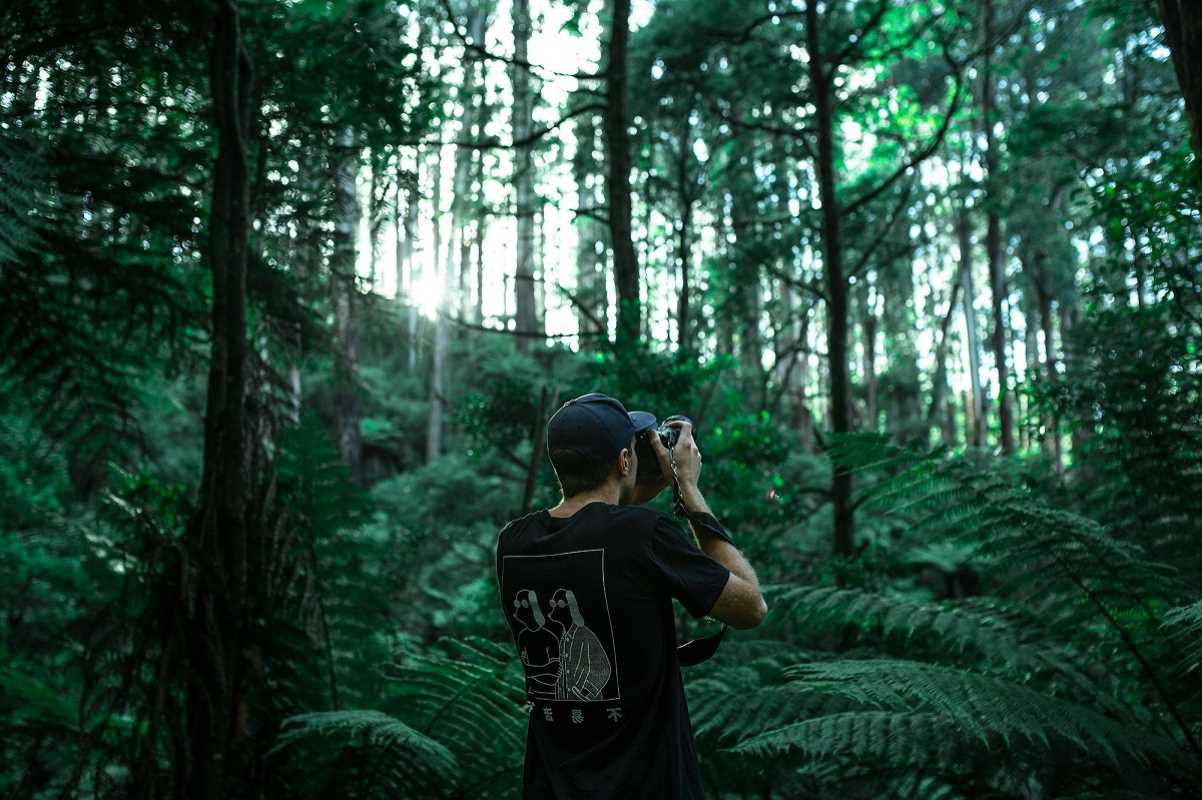Imagine standing beside a pristine mountain lake at dawn, camera in hand, as mist rises from the water's surface. Your mind quiets, your breathing slows, and for these precious moments, nothing exists except you, nature, and the perfect shot waiting to be captured. This isn't just photography – it's a powerful form of therapy that millions are discovering.
Research from Stanford University reveals that spending just 90 minutes in nature reduces activity in the brain's subgenual prefrontal cortex, an area associated with depression and rumination. When you combine this natural stress relief with photography's mindful focus, you create a potent antidote to modern life's overwhelming pace.
You'll discover how nature photography transforms your relationship with both the environment and your own mental well-being. From understanding the science behind this therapeutic practice to mastering beginner-friendly techniques, this guide will show you how pointing a camera at the natural world can fundamentally change how you experience stress, presence, and inner peace.
The Science Behind Nature's Therapeutic Power
Nature photography works because it combines two scientifically proven stress-reduction methods: time in natural environments and mindful attention. Understanding these mechanisms helps you maximize the mental health benefits of your photographic practice.
How Natural Environments Heal Your Mind
The Japanese practice of "forest bathing" or shinrin-yoku has inspired decades of research into nature's mental health benefits. Dr. Qing Li's studies at Nippon Medical School demonstrate that forest environments reduce cortisol levels, lower blood pressure, and boost immune system function within just 15 minutes of exposure.
Natural settings activate your parasympathetic nervous system – the "rest and digest" response that counters chronic stress. The irregular patterns, soft edges, and organic shapes found in nature provide what environmental psychologist Roger Barker called "restorative experiences" that allow your overstimulated mind to recover from mental fatigue.
Green spaces specifically trigger what researchers term "soft fascination" – gentle, effortless attention that gives your brain's executive functions time to restore. Unlike the "hard fascination" demanded by screens and urban environments, nature's beauty captures your attention without depleting cognitive resources.
The Mindfulness Connection in Photography
Photography naturally cultivates mindfulness by requiring present-moment awareness. When you're composing a shot, adjusting settings, and waiting for the perfect light, your mind anchors in the here and now rather than spinning through past regrets or future worries.
Dr. Jon Kabat-Zinn, founder of Mindfulness-Based Stress Reduction, defines mindfulness as "paying attention in a particular way: on purpose, in the present moment, and non-judgmentally." Nature photography embodies this definition perfectly. You must observe carefully, notice details, and remain open to whatever unfolds before your lens.
The act of framing a photograph forces what psychologists call "selective attention" – focusing on specific elements while filtering out distractions. This process mirrors meditation techniques that train your mind to concentrate on chosen objects rather than getting swept away by mental chatter.
Neurological Changes from Creative Engagement
Engaging in creative activities like photography triggers the release of dopamine, a neurotransmitter associated with motivation and reward. Studies using brain imaging technology show that creative pursuits activate the default mode network in ways that promote psychological well-being and reduce symptoms of anxiety and depression.
The combination of creativity and nature exposure creates what researchers call "cross-training for the brain." You're simultaneously exercising visual processing, creative problem-solving, and emotional regulation systems. This multi-faceted engagement explains why nature photography often feels both energizing and calming.
How Photography Deepens Your Nature Connection
Beyond stress relief, nature photography transforms how you perceive and interact with the natural world. This deeper connection provides lasting benefits for both mental health and environmental awareness.
Developing Naturalist's Eye
Photography teaches you to truly see nature rather than simply looking at it. You begin noticing subtle color variations in autumn leaves, the intricate patterns of frost on windows, or the way light filters through forest canopies. This enhanced observation skill, what naturalists call "field awareness," creates richer, more meaningful experiences outdoors.
Wildlife photographer Frans Lanting describes this process: "The camera is a tool for learning how to see without a camera." As your photographic eye develops, you start appreciating natural beauty whether or not you're carrying equipment.
Slowing Down in Fast-Paced World
Nature photography requires patience – waiting for animals to appear, for clouds to create interesting light, or for wind to still so flowers remain sharp. This forced slowing counters our culture's emphasis on speed and immediate gratification.
Research from the University of Rochester shows that people who engage in "slow living" practices report 40% lower stress levels and significantly higher life satisfaction scores. Photography naturally builds this slower rhythm by rewarding careful observation over hurried movement.
Creating Positive Memory Anchors
Photographing meaningful moments in nature creates what psychologists call "positive memory anchors" – vivid recollections you can return to during stressful times. The act of photography enhances memory formation by engaging multiple sensory and cognitive systems simultaneously.
Dr. Linda Henkel's research at Fairfield University reveals that while excessive photography can sometimes impair memory (the "photo-taking impairment effect"), mindful photography that involves careful composition and emotional engagement actually strengthens recall and emotional benefits.
Practical Benefits for Stress Management
Nature photography provides specific, measurable tools for managing daily stress and building resilience. Understanding these practical applications helps you use photography intentionally for mental health support.
Immediate Stress Relief Mechanisms
The moment you step outdoors with your camera, several stress-reduction processes begin. Your breathing naturally deepens as you move through outdoor spaces. Your visual focus shifts from close-up screens to distant horizons, relaxing eye muscles and reducing digital eye strain.
The physical movement required for photography – walking to locations, crouching for different angles, carrying equipment – provides gentle exercise that releases tension and promotes endorphin production. This isn't intense enough to feel like work, but sufficient to deliver mood-boosting benefits.
Building Emotional Regulation Skills
Photography teaches valuable emotional regulation skills that transfer to other life areas. When a shot doesn't turn out as planned, you learn to adapt expectations and try new approaches. When wildlife doesn't cooperate or weather turns challenging, you practice patience and acceptance.
These micro-lessons in frustration tolerance and creative problem-solving build what psychologists call "emotional intelligence" – the ability to recognize, understand, and manage emotions effectively. Research shows that people with higher emotional intelligence experience less stress and recover more quickly from difficult situations.
Creating Sense of Accomplishment
Completing a photography session, especially when you capture images you're proud of, provides a sense of accomplishment that counters feelings of helplessness or inadequacy. This is particularly valuable for people dealing with depression or anxiety, conditions that often involve persistent self-criticism.
The tangible results of photography – actual images you can view and share – create what psychologists call "mastery experiences." These small victories build confidence and self-efficacy, important protective factors against mental health challenges.
Getting Started: Essential Equipment for Beginners
You don't need expensive gear to begin experiencing the therapeutic benefits of nature photography. Starting with basic, affordable equipment allows you to focus on developing mindfulness and nature connection rather than getting overwhelmed by technical complexity.
Camera Options for Every Budget
Smartphone Cameras: Modern smartphones offer surprisingly capable cameras that many professional photographers use for certain projects. The key advantage is always having your camera available, removing barriers to spontaneous photography sessions.
Focus on learning composition principles and mindful observation rather than technical settings. Many phones offer "pro" modes that allow manual control over focus and exposure, providing growth opportunities as your skills develop.
Entry-Level DSLR or Mirrorless Cameras: If you want to expand beyond smartphone photography, consider entry-level cameras from Canon, Nikon, Sony, or Fujifilm. These typically cost $400-800 with a kit lens and offer significant image quality improvements plus manual controls that enhance the mindful aspects of photography.
Look for cameras with good autofocus systems and weather sealing if you plan to shoot in challenging conditions. The ability to change lenses opens creative possibilities as your interests develop.
Essential Accessories for Comfort and Safety
Sturdy Camera Strap: A comfortable strap prevents dropped equipment and reduces neck strain during longer photography sessions. Padded straps distribute weight more evenly and allow you to move freely while keeping your camera secure.
Basic Tripod: Even an inexpensive tripod expands your photographic possibilities by enabling longer exposures, self-portraits, and more deliberate composition. The process of setting up a tripod naturally slows you down and encourages more thoughtful image-making.
Weather Protection: Simple rain covers or camera wraps protect equipment during unexpected weather changes. Being prepared for various conditions allows you to spend more time outdoors and reduces anxiety about damaging expensive gear.
Software for Organizing and Sharing
Photo Management: Software like Adobe Lightroom, Capture One, or free alternatives like GIMP help organize and enhance your images. The editing process extends the mindful benefits of photography by encouraging careful examination of your work.
Backup Solutions: Protecting your images ensures you don't lose meaningful memories. Cloud storage services or external hard drives provide peace of mind that allows you to focus on creativity rather than worry about technical failures.
Mindful Photography Techniques
Developing specific techniques that combine photographic skills with mindfulness practices maximizes both the artistic and therapeutic benefits of nature photography.
Pre-Shoot Preparation Rituals
Begin each photography session with intentional preparation that transitions your mind from daily concerns to present-moment awareness. This might include several minutes of deep breathing, setting an intention for your session, or simply standing quietly to observe your environment before reaching for your camera.
Leave your phone on airplane mode or at home when possible. The goal is creating space between yourself and digital distractions that prevent full engagement with nature. Research shows that even the presence of a silent phone reduces cognitive performance and attention quality.
Slow Photography Approach
Resist the urge to capture everything immediately. Instead, spend time observing before taking any photos. Notice how light changes, how wildlife moves, how your own emotions respond to different scenes.
When you do start photographing, take fewer, more thoughtful images rather than rapid-fire shooting. Consider each composition carefully, adjust your position for different perspectives, and pay attention to technical settings rather than relying entirely on auto modes.
Composition as Meditation
Use composition techniques as mindfulness exercises. The rule of thirds encourages you to examine how elements relate within the frame. Leading lines draw your attention to visual paths through the image. These techniques train your mind to observe relationships and patterns – skills that benefit daily life beyond photography.
Practice what photographers call "working the scene" – taking multiple shots of the same subject from different angles, with various focal lengths, and under changing light conditions. This process develops patience and helps you discover beauty in ordinary subjects through careful attention.
Breathing and Movement Awareness
Coordinate your breathing with camera operation. Exhale gently when pressing the shutter to minimize camera shake and create a moment of stillness. This simple technique connects your physical state with the creative process and promotes relaxation.
 (Image via
(Image via





